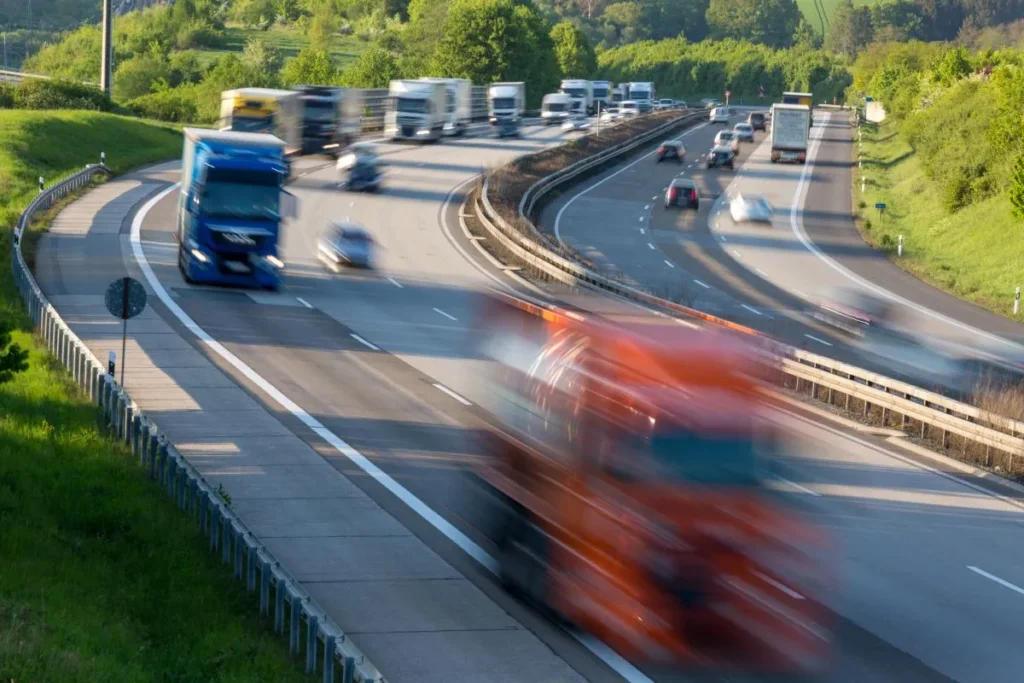From 1 January 2025 until the completion of the new Lueg Bridge structure, only one lane will be available on most days. Southbound traffic will have access to two lanes for 170 days a year, and northbound traffic for 160 days.
In early November, the Italian Chamber of Commerce in Bolzano released a study detailing the effects of single-lane traffic through the Lueg Bridge starting in 2025. The study, conducted by Uniontrasporti, an in-house research organisation of the Italian Chambers of Commerce specialising in transport and infrastructure, presents two scenarios, including the so-called “darkest scenario.”
The study examines the traffic restrictions already announced by Asfinag. Both scenarios also consider current traffic volumes, already impacted by Tyrolean driving bans.
Losses between €174 million and €600 million
Scenario A – Current Plan
Scenario A aligns with the current plan, assuming a 50% capacity reduction: one lane in each direction and two lanes for lighter traffic during peak times. Under this scenario:
- 90% of commercial traffic will remain on the Brenner motorway.
- 10% of commercial traffic will reroute via the Gotthard Pass, San Bernardino Pass, and Tarvisio Pass.
- Rail freight traffic is projected to increase by 4%.
- 27% of local traffic is expected to divert to other routes, such as the B182 (Brenner road from Innsbruck to Brenner Pass), or via the Reschen Pass, San Bernardino Pass, and Tarvisio.
According to the study, the consequences will be “serious time delays and additional costs” due to increased transit time, amounting to €174 million per year, of which €93.5 million is related to freight transport.
Scenario B – Total closure
Scenario B simulates a full closure of the route, alongside a prohibition on heavy vehicle traffic on the B182 (Brennerstraße). The Chamber of Commerce warns this could occur due to the lack of hard shoulders and lane dividers. According to the study:
- HGV traffic would mostly reroute to the Tarvisio Pass, Gotthard Pass, and San Bernardino Pass, with only a small portion using the Reschen Pass.
- This rerouting would lead to a substantial increase in costs from longer driving times and higher tolls in Switzerland.
Switching to rail is an alternative, though the Chamber of Commerce identifies challenges as the rail route is already at full capacity.
The study forecasts that costs from longer transit times would rise to €640 million per year, with €327.3 million attributable to freight.
“As the final assessment shows, the most critical trade corridor with Northern Europe is at risk of further restrictions due to the Lueg Bridge construction work,” reports news portal meinbezirk.at. This will likely compel many companies to seek alternative solutions and partners, potentially ending contracts and business relationships with Italian companies. There is a high probability these businesses will not return even once the Lueg Bridge work is completed.
Appeal by the Italian authorities
To mitigate the impact, the Italian authorities are calling for capacity assurances along the Brenner corridor. In the study, the Italians request the lifting of night-time truck bans and year-round two-lane traffic in both directions to avoid severe congestion on the Brenner Pass. Additionally, the Italian Chamber of Commerce advocates for shifting more transit to railways, proposing that RoLa services extend to Trentino, with truck and trailer transport by train offered at competitive prices.







![[Update] Austria toll dispute: industry postpones protest drive, shifts focus to negotiations](https://cdn-trans.info/uploads/2025/11/b939c6ce23f5936c3c9279b025f-en-1024x575.webp)

